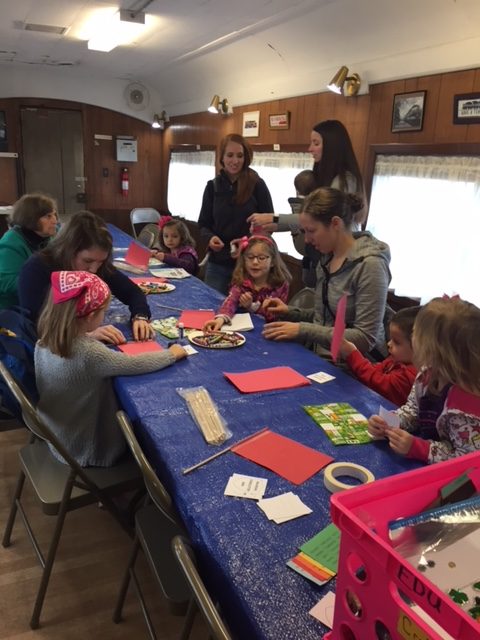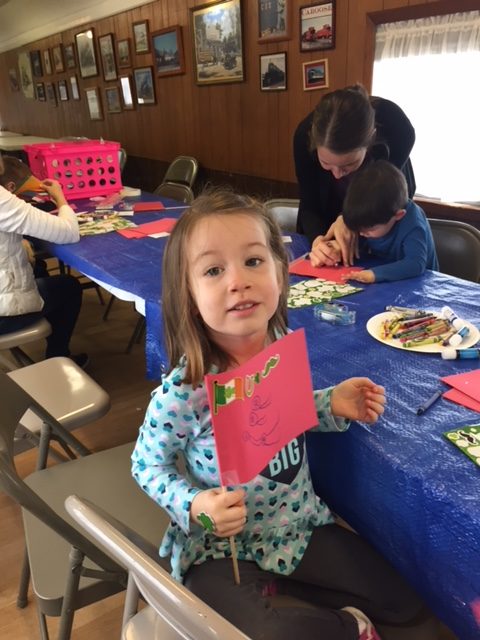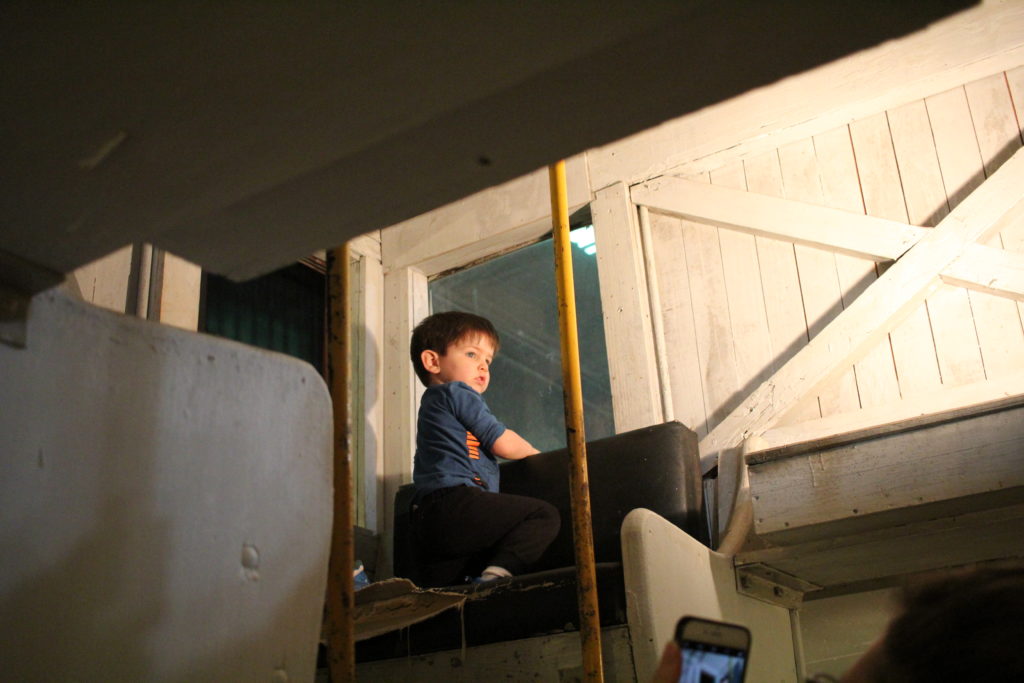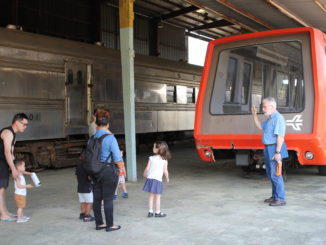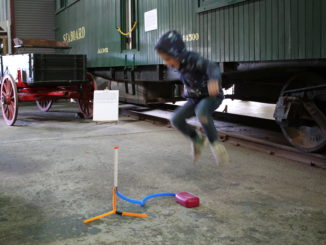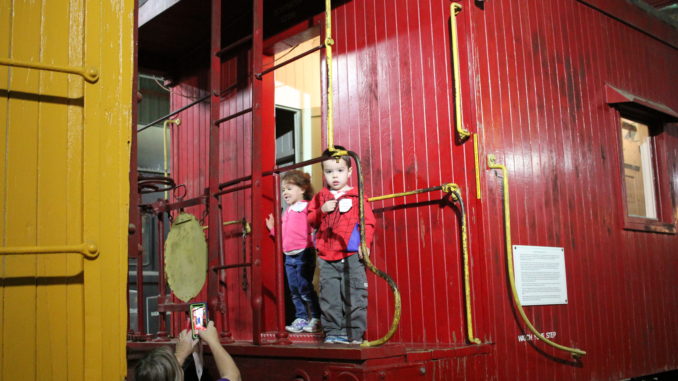
by Ruth Hummel
Education Dept. Editor
March’s Second Thursday program featured cabooses as our item of transportation. Preschoolers participated in several activities which included making a red flag like the ones used by conductors, brakemen and flagmen.
For another activity, children got to see first hand how flag signals were used on a remote toy train demonstration. The children flocked to the Party Car to play a game, Goose on the Loose in a Caboose, which was a fun matching game. During story time, preschoolers were entertained by hearing the story The Little Red Caboose and singing a song. Parents and children made tracks to explore the red cabooses inside and outside the museum. They learned conductors sometimes lived on the cabooses like a home away from home and that conductors are the bosses of the trains and have many important duties. Everyone had a “rail-ly” good time learning about cabooses!
Conductors, even though they do not stay on cabooses now, still have many responsibilities on a train. Here are some rules for our museum conductors.
The Conductor’s Role and Responsibilities:
1. In the vicinity of, or while on board a train, be responsible for the safety of the crew and museum guests whether they are passengers on board or just in the area, and the operating equipment (engine, cars, switches, signals, etc.).
2. Participate in the daily equipment inspection, testing (e.g. a terminal A&R check and leak test), and preparation of the consist (engine and cars) before boarding the first passengers of the day. Verify coupler pins are down, all hoses are properly connected, and angle cocks are properly set. Verify all manual emergency braking valves are closed. Verify no under-car damage has occurred.
3. Review issues regarding the engine and the braking systems with the engineer. Assure the last car has flags or other rear-end markers, and that windows are open or closed depending on the weather. At end of day assure all windows and doors are closed and remove rear-end flags/markers are removed and stored.
4. Share current operating conditions and restrictions with the engineer and crew in crew safety meetings.
5. Oversee the boarding of passengers, including the crew’s collection of travel tickets. Assure passengers are guided or assisted in boarding and leaving the train.
6. During trips communicate with the engineer about train movement, its direction, switch indications and positions, and track conditions, including other equipment and personnel in the vicinity of the train. Communicate to the engineer. Example: a grade crossing is clear.
7. When otherwise not occupied be available to our guests to answer questions and offer information about the museum, its history, and the
exhibits. This may happen before, after, or between train trips as well as when on board for a trip. Maximize the guest experience.-K. Birmingham 19 March, 2019
Ken is a conductor and our volunteer spotlight feature for April. Special thanks to Ken for sharing the conductor’s duty list.
Next month’s vehicle of the month will be: SUBWAYS! Children will learn about subways and have fun playing a game, participating in an activity, creating a craft, listening to a story, and exploring April’s item of transportation.
Now that spring has sprung, the weather will be getting nicer and our Second Thursday program will increase in popularity. Tickets can be purchased early online. Last summer, our programs did sell out, so if program attendees want to be assured a ticket, it is highly recommended they purchase online BEFORE that month’s 2nd Thursday program. If the program sells out online, then tickets WILL NOT be sold at the gate on the day of the event. Please check the Southeastern Railway Museum’s education page for upcoming 2nd Thursday events.
Ruth Hummel
Education Dept. Editor

